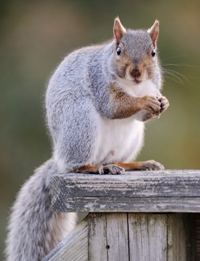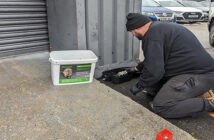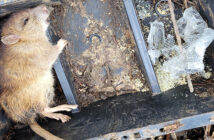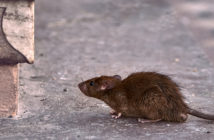The recent legal case of the Staffordshire window cleaner who caught, and subsequently drowned, a squirrel he trapped in his own garden has raised a whole series of questions.
In this widely reported test case brought by the RSPCA, Raymond Elliott, pleaded guilty for causing a wild animal ‘unnecessary suffering’ under the Animal Welfare Act 2006. Mr Elliot received a six-month conditional discharge and was ordered to pay £1,547 to cover investigation and legal costs incurred by the RSPCA.
To read the full story as reported by The Daily Telegraph on 19 July 2010 click here.
|
The Animal Welfare Act 2006 states that it is illegal to cause ‘unnecessary suffering’ to all wild animals caught in live capture traps and deemed under the control of man. This obviously raises serious implications for all those within pest control who are called upon to deal with live animals – or in pest control terms – ‘pests’. Captured squirrels, foxes, rabbits and moles rapidly spring to mind. But it would also cover all rodents (rats and mice) as well as all birds. Help! What is your opinion? At Pestwe are interested in what you think – so please click here and let us know. Don’t worry – any comments published in any form will be anonymous. To get you thinking… “The Staffordshire case raises the contentious issue of humane dispatch or other means of dealing with pest species. It also highlights the problems that arise where householders and others inexperienced in handling trapped animals use live capture cage traps that are freely available from garden centres, DIY stores and hardware shops. Sometimes described as ‘humane’ there is usually no advice or guidance supplied on how to deal with the captured animal. Taking squirrels as the example, drowning is generally viewed as an inhumane method of killing any animal. An opinion based on observations of the period of time, often several minutes during which the subject is seen to struggle. Dispatching by running the squirrel into a sack and delivering a blow to the head is seen as ‘barbaric’ by the general public and others but is widely used as the technique of choice in forestry protection and other pest control activities. Experience has shown that used correctly this produces a swift kill with the minimum of stress imposed on the animal. No special equipment is required and there are none of the complications where the use of a firearm is involved. |
|
|
|
There appears to be some misunderstanding where it is recommended or proposed that more than one blow is delivered using this technique and a suggestion that this could be an offence. It is good practice to deliver the first blow with the intention of this resulting in the required lethal effect but with a second delivered immediately after the first before checking that the animal is dead. This provides additional ‘insurance’ that the squirrel has been swiftly killed. Trying to accurately shoot a squirrel in a trap requires patience; the typical cage trap is not designed to enable the animal to be confined to one area such as is found where ‘squeeze traps’ are used in other trapping work. This is made more difficult when an air rifle is used. Let’s consider the proposal to seek the services of a vet to dispatch the squirrel. Defining stress is difficult but surely this aspect has to be taken into account; transporting the unfortunate animal in the trap some distance within a vehicle, exposure to daylight, heat/cold, arriving at and waiting in an alien, hostile environment (a vet surgery with all its accompanying smells & noises) to be followed by the administration of a lethal injection that can be problematic to deliver and could result in a period of time before death, will all result in significant stress that could be avoided. Provisions of The Animal Welfare Act 2006 should be considered in respect of all trapping operations where once caught, the animal is deemed to be ‘under the control of man’ and therefore subject to this legislation. It would seem to be a sound principle that no one should set any live capture cage trap for all potential target species including rodents, feral mink, grey squirrels, rabbits and foxes where there is the intention/requirement to kill any captured unless they have made appropriate provision (techniques will vary according to the species) for these animals to be humanely dispatched by either themselves or another party who are competent and able to undertake this task. As a principle, I take the view that in order to minimise stress that wherever possible, captured animals should be dispatched at the trapping site so avoiding the requirement to transport & move the animals. Clients and customers may not take kindly to this (preferring ‘out of sight out of mind’) but don’t they need to take some responsibility in assisting with welfare and related aspects?” |
||


 Once caught – what next?
Once caught – what next? 

